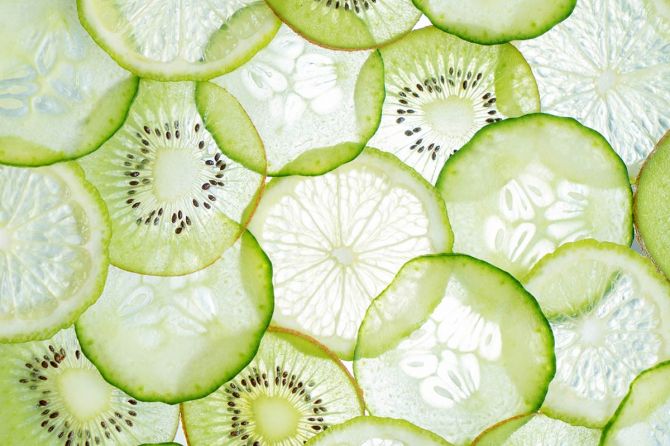Wellness expert Roopashree Sharma tells you how you can use natural methods to improve your health.
With the world still battling an unexpected challenge and the lines fading between work and home, personal health takes the first hit!
While we have all been ‘immunised’ by one brand or the other, there is a need to understand wellness beyond immunity. At the same time, one must not forget that an over-aggressive immune system can lead to auto-immune disorders.
It’s time to stop and think where the daily rush is taking us and respect our vehicle — our body. Watch your sleep schedules and what you eat. Exercise daily.
And how does one go about doing this?
It is here that ancient wellness can come to the rescue; it lays down the information and rules
loud and clear, only if we are listening.
The first step is to better understand our body type before jumping into a tough regime.
Know your body type
Every individual is born with the dominance of a particular nadi (channels through which energies such as prana flow).
They don’t just define your Ayurveda body type (each one’s body is dominated by either the Pita, Vata or Kapha elements) but also your tastes, your food preferences and other body traits.
Have you noticed that the nadiS are mentioned not just in yoga texts (Ida, Pingala and Sushumna) but also in astrology (Adi, Madhya and Antya)?
The concept is also found in other cultures, including Tibetan medicine and the European Caduceus of Hermes.
Understand wellness
Wellness regime is not a one-hour yoga class or a diet plan; it is a way of life. It is the journey, as well as the destination.
Ever thought why we feel worse after our first workout session and don’t want to repeat it the next day? Well, your body’s response to a workout or a diet depends on two things — the toxin levels in your body and your stamina.
Therefore, these need to be addressed before getting into any workout regime.
Here’s a recommended wellness flow for beginners.
However, if you have any special health conditions you should consult your nearest Ayurveda practitioner.
Detoxify your body
The first step to moving closer to nature — and your true self — is detoxification.
Many factors like high preservative intake, poor digestion, dehydration or eating home-made yet stale/frozen food lead to high toxic levels in the body.
Imbalances in the doshas also affect the digestive fire (Agni) of the stomach.
The result is accumulation of toxins or ‘Ama’ in the body, causing dysfunctions and diseases.
Detoxification helps cleanse and eliminate toxins from your body, balance the doshas and restore the overall balance of mind and body.
The first step towards detoxing is to eat fresh food, as much as possible. It has higher nutritional value and water content, which helps hydrate the body and tissues.
The ‘Prana’ value or life-giving energy is higher in fresh foods; the longer it is stored, the lower its ‘Prana’ value.
Recommended diet
Begin with petha or white pumpkin juice.
One glass of fresh white pumpkin juice, first thing in the morning for about 21 days, cleanses your intestines of toxins.
Benefits
Pumpkin helps balance the Vata and Pitta doshas.
It is also a coolant and helps increase the Kapha dosha.
It increases strength and immunity while also providing nutrition.
By cleansing your intestines, it improves your digestion.
However, if you have a cold, avoid doing this until you feel better.
Recipe
Take a white pumpkin, remove the peel and any ripe seeds. Chop into small pieces and juice it.
Intake
Consume fresh.
You can add a little honey for 1-2 days until you get accustomed to the taste.
Then, have the pure juice for 21 days.
Start with half a glass and gradually increase to a full glass every morning on an empty stomach.
Recommended exercise
Enough has been said about the benefits of walking. It is the best way to prepare your body for an exercise regime.
Walking daily releases feel-good hormones that reduces stress. It t also activates your lower abdomen, thus facilitating digestion.
Build stamina
Stamina is defined as the ‘the bodily or mental capacity to sustain a prolonged stressful effort or activity’.
Are you feeling low on energy lately?
Losing breath after climbing a single flight of stairs?
Struggling with low concentration?
Are your problem-solving skills stressing you out?
Then working on your stamina might be just the thing you need.
Coping with today’s frantic lifestyle requires a lot of energy; this is where stamina and endurance helps.
Recommended diet
Quick energy foods like coconut water, honey, dates (one or two) and bananas are easy to digest and give you a quick boost of energy.
If you have good digestion, then a tbsp of ghee with your meals is a good source of healthy fat.
Intake
Chose your favourite option and consume daily for at least 21 days to improve your stamina.
Recommended exercise
a. Deep breathing
Before you read further, close your eyes and take a deep breath. Count to 10, or at least to five, then release your breath to the same count. What do you feel?
Here’s what happens a single breath.
The air that we inhale is a form of energy that charges our bodies.
While exhaling, we let out carbon dioxide along with all the toxic waste.
However, we are so involved with our busy lives that we fail to pay attention to our breathing.
We don’t use our lungs to their full capacity, so our body doesn’t get rid of carbon dioxide. We also don’t take in enough oxygen, which leads to stress and fatigue.
Practise deep breathing, starting with five minutes up to 10-15 minutes, first thing in the morning and before going to bed.
Benefits
Deep breathing not only improves our lung health, but also helps activate and strengthen our core muscles.
b. Stretching
Once your body has the strength and energy, start with stretches before you jump into full-on exercising. These three yoga asanas provide a good start:
Pashchimottanasana (Seated forward bend): It helps stretch the back, spine and hamstrings.
Tadasana (Mountain pose): Helps with balance and posture.
Vajrasana (Thunderbolt pose): Helps with digestion, aligns spine.
Practise these for at least two weeks to bring flexibility to your muscles, before you start any workout regime.
However, if you have any lower back issues, try basic stretches lying down and consult a yoga practitioner.
Easy workout schedule
Any form of mental and physical workout that you enjoy doing accounts for exercising. Be it your favourite sport, dance form or everyone’s favourite — yoga.
The underlying fact is that it should be something you look forward to despite the pain it might hold.
Exercise is important for balance of mind and body but remember that too much of it can also be harmful.
Post workout, you should feel fresh and energetic not exhausted and worn out.
Watch what you eat before and after your workout.
You must eat quick energy food at least one hour before you exercise; the gap should be at least two hours if you have had a full meal.
Cooling off
It is important to channel and balance your high energy levels post your workout. An easy walk back home from your class or breathing exercises is ideal.
Pranayam — paying attention to your breathing — helps energise the body.
By breathing right, the blood gets the required supply of oxygen to meet the body’s demand. Poor oxygen supply leads to problems such as muscle deterioration, etc.
Your post-workout diet intake is not only about proteins, but also about replenishing the salts and sugar and hydrating your body.
And we have just the right drink — a staple straight from the farming community.
Recommended diet
Try a sattu drink.
Benefits
Sattu is powdered channa (Bengal gram) that contains high nutritional value and 20 per cent protein.
Sattu is the perfect workout drink. It is easily digestible and provides instant energy.
Recipe
Mix these and store.
Roasted sattu powder: 250 gms
Coconut sugar/Jaggery powder: 50 gms (if you have cold, avoid these. Instead, add honey when you make the drink).
Jeera powder: 2 tablespoons
Himalayan salt: 2 teaspoons
Take two glasses of water.
Add 2 tablespoons of the above mixture and 1/2 tablespoon lime juice to each glass of water.
Stir well and serve.
All the best as you start on your wellness regime.
*Kindly note that the images have been posted only for representational purposes.
Roopashree Sharma, a qualified yoga trainer and naturopathy enthusiast, is the founder of Atharvanlife.
Please note: This is an advisory. Please consult your doctor as well. In case of any discomfort, please stop the regime and visit your doctor.
Source: Read Full Article






